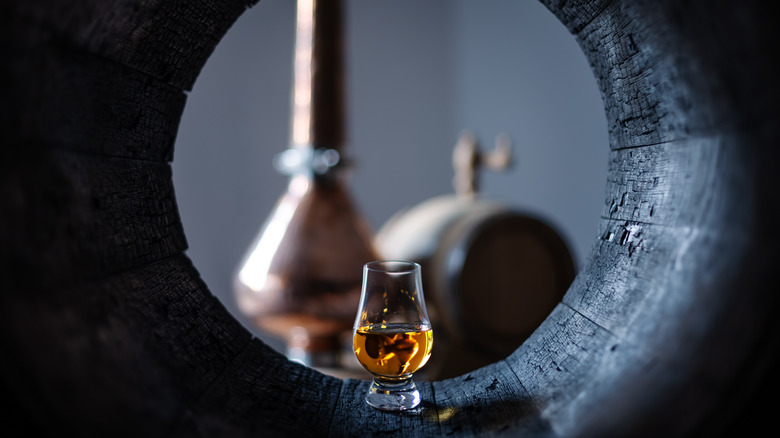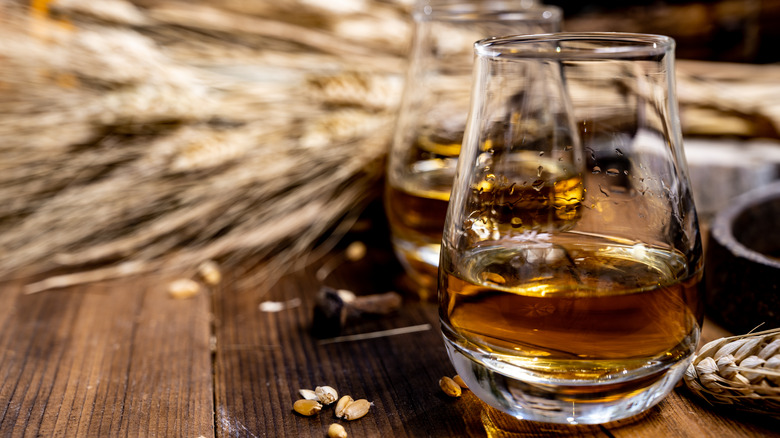The Quality Difference Between Single Malt And Blended Whiskey
Determining the quality of a spirit can be tricky. With extensive rows of products gracing the shelves of a liquor store, selecting between bottles can feel overwhelming. Especially when it comes to whiskey, deconstructing the nomenclature is a helpful start. Untangling the descriptors on the bottle — many of which are legally regulated by country — can provide insight into pinpointing the optimal taste.
When it comes to markers of quality, few terms in the whiskey world have the regard of single malt. Especially amongst Scotch varieties, this style of production is known for its complexity and variety of flavors, which is backed up by a heftier price tag. The whiskey type is undeniably of high quality but that is not to say it's outright better than all blended expressions. Both categories offer their own unique attributes with significant variance between producers. So, let's dive into what quality differences to expect between single malt and blended whiskey.
Single malt whiskey is produced at a single distillery
Single malt's nomenclature is confusing as many mistakenly believe it's crafted from a specific batch and aged in only one barrel. Such a product does exist but it's labeled as a single barrel. Instead, single malt refers to a whiskey created using exclusively malts at only one distillery.
Single malt whiskeys are typically blended. Since each distilled batch of spirits differs, producers maintain a consistent flavor by mixing barreled liquors of varying ages. This way, an expression of whiskey can have a nearly identical palate, even across different years. The age on the label refers to the youngest barrel utilized in the final blend.
So why is a single malt often the preference for quality? Firstly, malts often but not always lend a more tasty result than grain-based liquor. Additionally, since the creation process is limited to a single distillery, there's often a more rigid adherence to quality and ingredients with single malt. Although lower-quality blended whiskeys may contain off-putting additions, that's not to say all blended expressions are of poor quality. Single malts generally carry a more esteemed reputation but there are also stellar blended renditions, too.
Blended whiskey encompasses a larger spectrum of spirits
Blended whiskeys comprise the vast majority of sales in this spirit category. In fact, most of the familiar big-label expressions are this spirit type. Blended whiskeys can incorporate a wide variety of distillates. A bottle can contain liquor that hails from varying distilleries and uses a combination of grain and malts. It may even be sourced from different countries.
Combined with a typically lower price point, this gives the impression most of these whiskeys are of worse quality. With this label's encompassing nature, there may indeed be some unpalatable expressions. However, that's not to discount the exemplary renditions in the category.
Several of the world's most acclaimed whiskeys are of the blended variety, including in the Scotch category. The style's flexibility allows blending masters to hand-pick the most flavorful liquors without confinement to producer and composition. So, while a single-malt may be a more convenient go-to at the liquor store, there are also some exemplary blended expressions to look out for. Search for reputable producers and expect to pay a little more; it'll be sure to impress.


